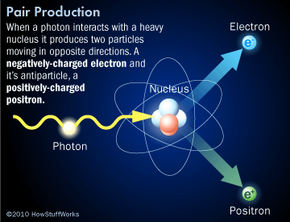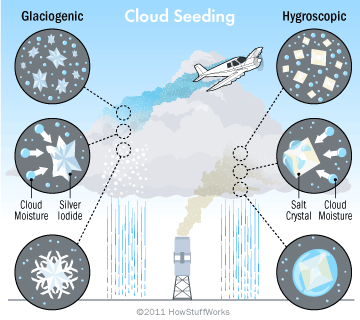Key Takeaways
- According to the first law of thermodynamics and Einstein's theory, matter and energy are interchangeable, and a fixed quantity of both exists in the universe.
- While humans can manufacture matter from energy, creating something from nothing remains impossible, adhering to the fundamental laws of physics.
- Manufacturing matter involves converting energy into matter, a process that has been demonstrated in labs through pair production, which converts a photon into a pair of particles: one matter and one antimatter.
The Latin phrase "creatio ex nihilo" means "creation out of nothing," and it's largely the domain of theology, philosophy and mythology for a reason: the first law of thermodynamics, which is actually a conservation of energy equation. The gist of that equation, as you no doubt remember, is that energy can neither be created nor destroyed.
How does this law affect matter? Albert Einstein theorized that matter and energy are interchangeable. Matter takes up space, has mass and composes most of the visible universe around you. Energy, on the other hand, takes multiple forms and is essentially the force that causes things to happen in the universe. Yet both matter and energy are variations of the same thing. Each can convert into the other. According to Einstein and the first law of thermodynamics, a fixed quantity of energy and matter exist in the universe.
Advertisement
When two protons collide in the Large Hadron Collider, they may break apart into subatomic particles called quarks and a mitigating particle force called a gluon. Even when matter and antimatter annihilate each other, they produce energy, in the form of photons, which are quantum units of light.
If you were to build a molecule out of atoms, you wouldn't be creating matter. An atom is matter as well -- and so are the subatomic particles within it. It's like if you took flour and used it to make a cake. You wouldn't be creating food. Instead, you'd be taking one food product and building a more complicated food out of it.
To manufacture matter in a way that adheres to the first law of thermodynamics, you have to convert energy into matter. This conversion occurred on a cosmic scale about 13 billion years ago. The big bang consisted entirely of energy. Matter only came into being as rapid cooling occurred.
In the lab, creating matter entails a reaction called pair production, so called because it converts a photon into a pair of particles: one matter, one antimatter (the reverse of the matter-antimatter annihilation we just mentioned). Brookhaven National Lab, the European Organization for Nuclear Research (CERN) and Fermilab have all generated this reaction by firing a photon into a heavy atomic nucleus. The nucleus shares the energy and allows the photon to disintegrate into an electron and a positron, the antimatter opposite of an electron. The positron inevitably turns back into a photon when it collides with an electron.
So yes, humans can manufacture matter. We can turn light into subatomic particles, but even the best scientists can't create something out of nothing.
Explore the links on the next page to learn even more about the subatomic world.
Advertisement


